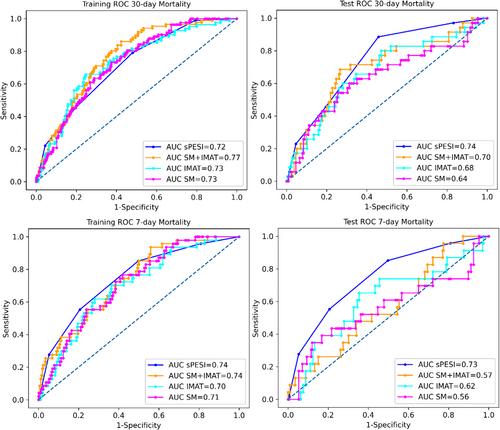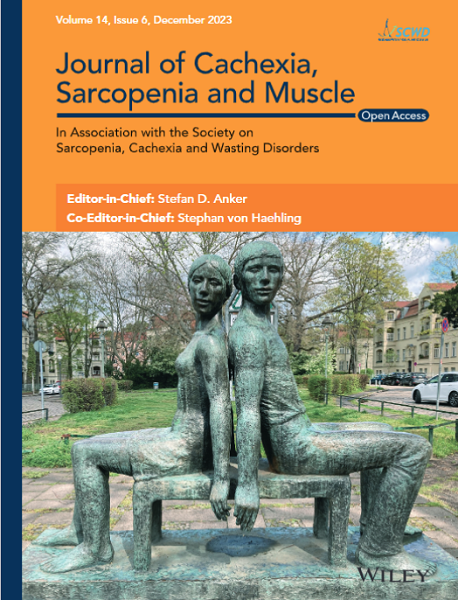Acute pulmonary embolism (APE) is a potentially life-threatening disorder, emphasizing the importance of accurate risk stratification and survival prognosis. The exploration of imaging biomarkers that can reflect patient survival holds the potential to further enhance the stratification of APE patients, enabling personalized treatment and early intervention. Therefore, in this study, we develop computed tomography pulmonary angiography (CTPA) radiomic signatures for the prognosis of 7- and 30-day all-cause mortality in patients with APE.
Diagnostic CTPA images from 829 patients with APE were collected. Two hundred thirty-four features from each skeletal muscle (SM), intramuscular adipose tissue (IMAT) and both tissues combined (SM + IMAT) were calculated at the level of thoracic vertebra 12. Radiomic signatures were derived using 10 times repeated three-fold cross-validation on the training data for SM, IMAT and SM + IMAT for predicting 7- and 30-day mortality independently. The performance of the radiomic signatures was then evaluated on held-out test data and compared with the simplified pulmonary embolism severity index (sPESI) score, a well-established biomarker for risk stratification in APE. Predictive accuracy was assessed by the area under the receiver operating characteristic curve (AUC) with a 95% confidence interval (CI), sensitivity and specificity.
The radiomic signatures based on IMAT and a combination of SM and IMAT (SM + IMAT) achieved moderate performance for the prediction of 30-day mortality on test data (IMAT: AUC = 0.68, 95% CI [0.57–0.78], sensitivity = 0.57, specificity = 0.73; SM + IMAT: AUC = 0.70, 95% CI [0.60–0.79], sensitivity = 0.74, specificity = 0.54). Radiomic signatures developed for predicting 7-day all-cause mortality showed overall low performance. The clinical signature, that is, sPESI, achieved slightly better performance in terms of AUC on test data compared with the radiomic signatures for the prediction of both 7- and 30-day mortality on the test data (7 days: AUC = 0.73, 95% CI [0.67–0.79], sensitivity = 0.92, specificity = 0.16; 30 days: AUC = 0.74, 95% CI [0.66–0.82], sensitivity = 0.97, specificity = 0.16).
We developed and tested radiomic signatures for predicting 7- and 30-day all-cause mortality in APE using a multicentric retrospective dataset. The present multicentre work shows that radiomics parameters extracted from SM and IMAT can predict 30-day all-cause mortality in patients with APE.



